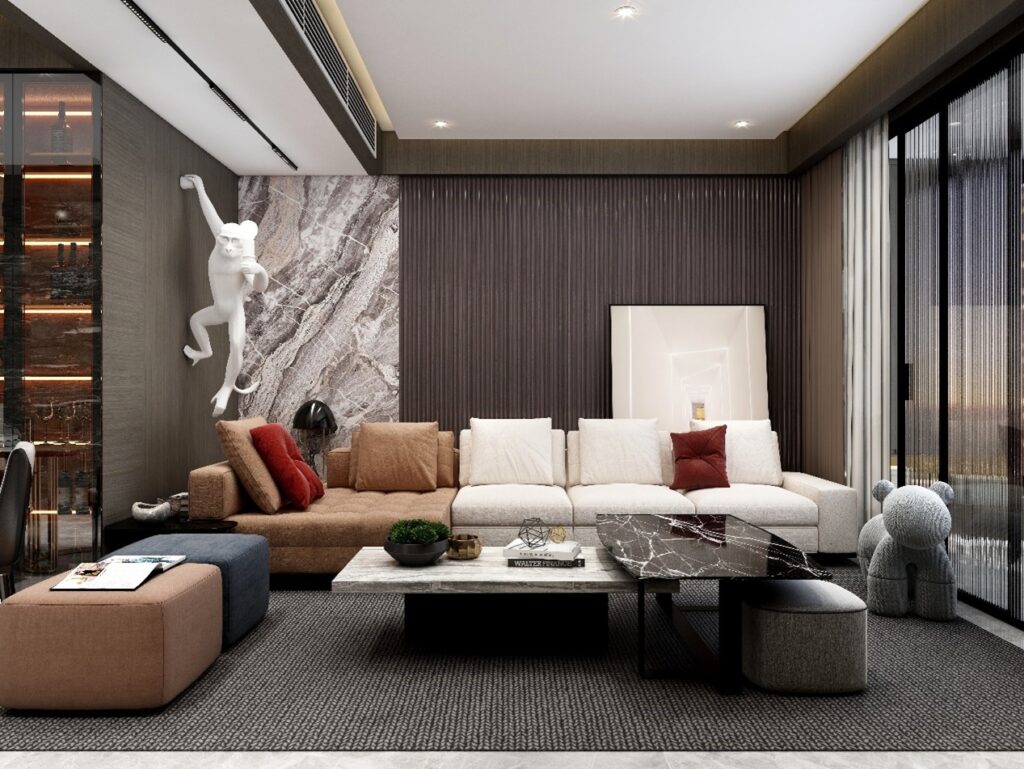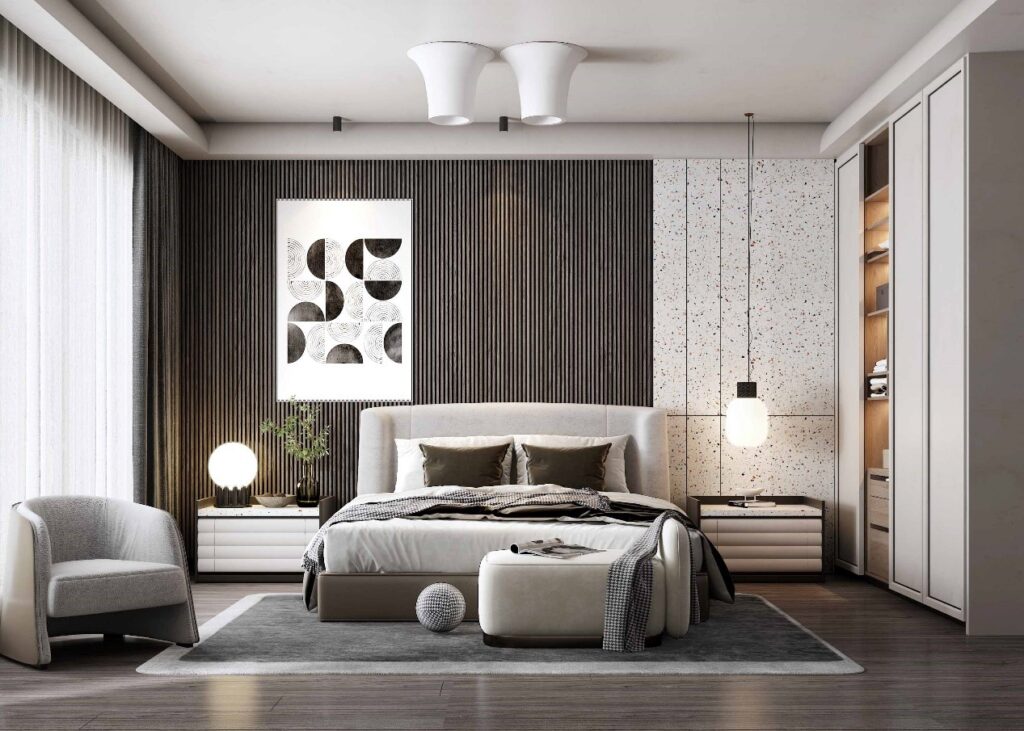Wood Plastic Composite, or WPC panels are a new material spreading the building and design sectors. They provide a special fusion of the strength and practicality of plastic with the organic beauty of wood. This blog post will go into the world of WPC panels, examining their many applications, their abundance of benefits, and some things to think about before using them in your upcoming project.
What Exactly Are WPC Panels?
The process of making it involves mixing thermoplastic polymers such as polyethene or polypropylene with wood fibres, usually recycled wood or dust. To improve the quality of the finished product, additional additives such as fluids, colouring agents, and UV stabilizers are also added. After being extruded at high pressure and temperature, the mixture has a variety of remarkable properties and a distinctly wood-like look.

Revealing the Various Uses for WPC Panels
The remarkable adaptability of WPC panels is evident. They are favoured by architects, builders, and consumers alike since they can be readily integrated into both indoor and outdoor applications. Here’s a sampling of the many applications that WPC panels can be used for:
Decking and Cladding:
Because of its outstanding weather resistance, WPC panels are an excellent option for outdoor decking. Like conventional wood decking, they are resistant to insect infestation, warping, and decay. In addition, they require less upkeep than wood, which makes them a durable and low-maintenance option for pool surrounds, patios, balconies, and walks. WPC panels can also be utilized to coat exterior walls, giving your building a fashionable and weatherproof appearance.
Fencing and Railings:
Traditional wood fencing can be replaced with solid and elegant WPC panels. Their long lifespan with little maintenance is guaranteed by their resistance to fading, cracking, and splintering. In addition to pool barriers, they can be used to build garden borders, privacy walls, and elegant deck and balcony railings.
Interior Applications:
WPC panels are used for much more than only outdoor use. Their practicality and visual attractiveness make them a well-liked option for a variety of interior design aspects. They can be used as panel walls, giving living rooms, bedrooms, and corridors a cosy and welcoming feel. These Panels are a strong and fashionable substitute for conventional materials that may be used in furniture, kitchen cabinets, and bathrooms.
Doors and Partitions:
Interior doors that are both strong and lightweight can be made with WPC panels. They provide a flexible and visually appealing way to divide areas, making them ideal for establishing walls in workplaces, dining establishments, and retail stores.
Revealing Their Benefits
WPC panels are becoming more and more popular because of all the benefits they provide over more traditional building supplies like cement or wood. Let’s examine a few of the main advantages that set WPC panels apart:
Durability and Longevity:
WPC panels have an amazing resistance to warping, decay, dampness, and insect infestation. They will not be harmed by rain, snow, or other adverse weather like wood might. In the long term, this saves you time and money because it has a longer lifespan and requires less care.
Low Maintenance:
When compared to traditional materials, WPC panels require less maintenance. WPC panels are easily cleaned with soap and water, unlike wood, which requires frequent staining or painting. They also lessen the need for harsh cleaning agents because of their resistance to mildew and mould.
Weather Resistance:
WPC panels are extremely resistant to a variety of weather conditions, as was previously noted. Because of their UV protection, they won’t fade or become discoloured after hours in the sun. They’re also resistant to harsh temperatures, which means they can be used in a variety of climates.
Aesthetics and Design Flexibility:
Because WPC panels are available in a range of hues, textures, and finishes, you may design the look you want for your project. accommodate modern design tastes, they are available in a variety of modern colours. Alternatively, they can replicate the natural beauty of wood with genuine wood grain patterns. They also give a great deal of versatility for unique designs because they are simple to mould, drill, and cut.
Environmentally Friendly:
Since WPC panels are frequently comprised of reclaimed wood fibres, they support more environmentally friendly building practices. In addition, waste production is decreased by their extended lifespan and less maintenance needs compared to conventional materials that need to be replaced frequently.
Fire Resistance:
WPC panels are more fire-resistant than untreated wood since many of them are made with fireproof chemicals. This increases your building’s overall safety.
Improved Safety:
Compared to other conventional materials like wet wood or cement, WPC panels are non-slip. This can be an important safety consideration for decks, swimming pools, and other wet locations.
Easy Installation:
Compared to heavier materials like cement, WPC panels are relatively easy to install and lightweight. They are a do-it-yourself choice for certain tasks because they are simple to cut and connect with common woodworking tools. To guarantee correct technique and a perfect finish, expert installation is advised for larger projects.

A Closer Look at the Disadvantages
While it offers a multitude of benefits, it’s important to acknowledge some potential drawbacks to consider before making your decision:
Cost:
As previously stated, the initial cost of Panels may be more than that of conventional materials like untreated wood. In the long run, however, their low maintenance needs and lengthy lifespan may help to offset the initial investment.
Limited Fire Resistance:
Even while some Panels have chemicals that delay fires, they are not totally fireproof. Make sure the WPC panel you select satisfies the building code requirements for your project by always checking its fire rating.
Heat Sensitivity:
Warm temperatures have the potential to cause bending or weakening of it. While this could not be an issue in most climates, it should be taken seriously in places that get extremely hot. It is essential to use premium Panels with higher temperature resistance for projects in these parts.
Aesthetics:
It can appear to have genuine wood grain, but they are unable to fully capture the slight variances and textures of real wood. Consider using conventional wood if you want a high-end or rustic wood look.
Environmental Impact:
Depending on how they are made and where the wood fibres come from, WPC panels might have different environmental effects. Select Panels that are produced by environmentally friendly companies using reclaimed wood to reduce your environmental impact.
Conclusion
To sum out, WPC panels present a strong substitute for conventional building materials, offering a special combination of durability, functionality, and aesthetics. You may decide if WPC panels are the best option for the project you’re planning by carefully weighing their applications, benefits, and any downsides.
If you’re looking for premium WPC panels in Nepal, look no further than Interio Decor. They offer a wide selection of high-quality Panels in various styles and finishes to suit your design needs. Contact Interio Decor today to discuss your project and find the perfect Panels to elevate your space.

